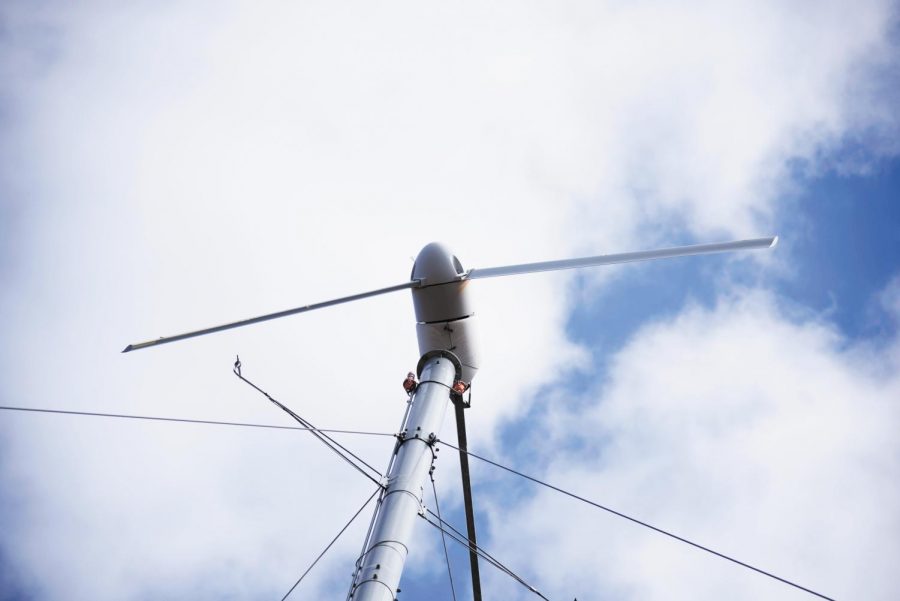Environmental efforts strive to divest
The 108-foot high wind turbine located near Jeffords Hall produces 3,000 to 5,000 kilowatt hours a year, enough to power an energy efficient home for 12 months. From 2007 to 2013, UVM decreased its carbon footprint by 45%, however, ecological groups on campus are weary of this statistic and continue to work to reduce UVM’s ecological footprint.
April 15, 2019
While the University bills itself as an environmentally friendly school, some ecological groups are working to further lower its environmental impact.
From 2007 to 2014, UVM decreased its carbon footprint by 45%, said Gioia Thompson, office of sustainability director.
But some students working to improve the statistic feel that the administration can do more to decrease UVM’s impact on the environment.
The administration is often very easy to work with when it comes to environmental initiatives, senior Juliana Landis said. Landis is a member of the Eco-Reps, an environmental organization that promotes sustainable choices on campus.
“I definitely see the Eco-Reps position as sort of a connecter between the administration and student groups,” she said.
From her position, Landis coordinates the interests of the administration and student groups during events like Earth Week, a celebration that promotes environmental awareness.
Earth week runs from April 22 to 28, according to UVM’s Earth Week webpage.
Despite how supportive the administration has been with her work as an Eco-Rep, Landis feels they can do more to help the environment.
“Like in any large institution, there’s more that can be done,” she said. “But I think there’s a ton that they’re already doing that a lot of students don’t see upfront.”
Landis and sophomore Jacob Weinstein, an SGA senator on the Committee on the Environment, both feel the administration could focus more on its fossil fuel divestment, the removal of investments in the fossil fuel industry.
“I get so confused over what body of older men gets to decide whether our University divests,” Landis said. “I feel pretty ingrained in the sustainability world and I don’t know what UVM is doing.”
Weinstein believes the administration is not upfront about its involvement in the fossil fuel industry.
“The fact that we haven’t divested from fossil fuels yet is one of the most alarming things in my opinion,” Weinstein said. “We don’t have a clear stand on investment, and that’s not something that’s marketed to students when they come here.”
On the administration’s side, Nancy Mathews, dean of the Rubenstein School of Environment and Natural Resources, said that UVM is beginning to divest more from fossil fuels because of the Green Fund, an endowment that restricts fossil fuel investments.
Mathews said that students don’t hear about this, but it should be celebrated despite UVM’s past investments.
“It’s hard to go back and undo what has been done,” Mathews said.
Thompson believes that UVM is making progress toward reducing the University’s carbon impact.
“Now that we’ve taken out the electricity, we have reduced our carbon footprint significantly,” Thompson said. “Most of [UVM’s] carbon footprint comes from heating and cooling fuels.”
Since 2015, UVM has used 100% renewable electricity by installing solar projects and purchasing Renewable Energy Certificates, according to the Office of Sustainability’s website.








